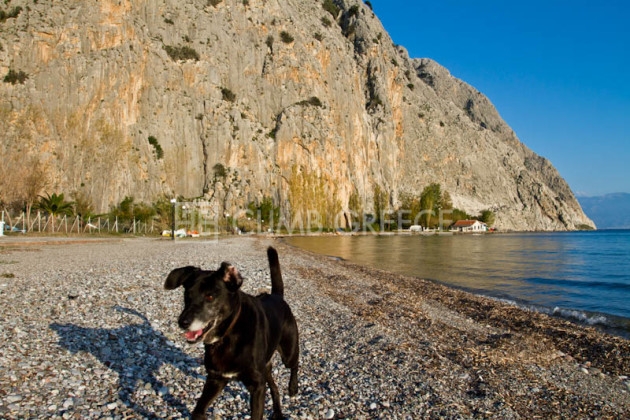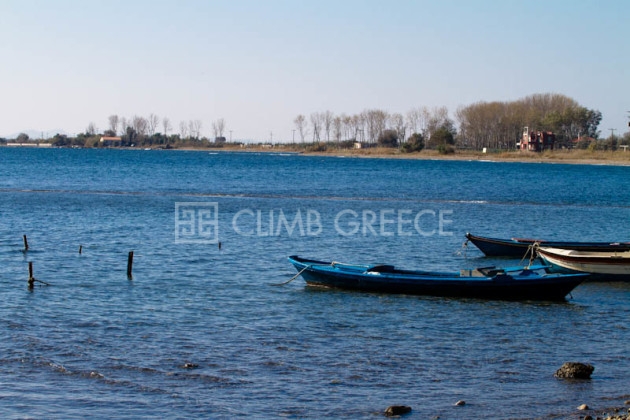Accommodation: The majority of climbers in Varasova prefer free camping beneath the cliffs, as the road ends at a small grassy clearing between the cliffs and the sea. If you pitch a tent, keep a safe distance from the cliffs to avoid potential stonefall. Also, know that it can get very windy.
For paid accommodation, there are several options
Glyka apartments
Mourkos apartments
Penelope hotel
Philoxenia apartments
Socrates organic village
Food/shopping: The nearest village, Galatas (3km), has a few small shops, a gas station and some tavernas. For everything else there is Messolonghi (10km). And Captain del Mar, the seaside restaurant near the crag, is very good. If you like fish, try petáli paired with wild mountain greens.












Varasova (pronounced va-RA-so-va) is a solid limestone massif rising to 917m on the west coast of Greece, across the water from the city of Patras. Its south and southwest faces form an impressive promontory the end of which drops directly into the sea. Greek climbing took its first steps here in 1958, so Varasova has a special place in the hearts of Greek climbers. Coupled with Meteora, it is one of the most popular and historic climbing venues in the country, especially when it comes to multi-pitch routes. But don’t worry, you won’t run into any crowds. Varasova is mainly a weekend venue, so if you are here mid-week you are very likely to have the crag to yourself.
Climbing: The three peaks of Varasova rise to nearly identical elevation. The rock is very solid, relatively sharp, mostly gray or yellow limestone of outstanding quality. It is generously featured and teeming with variety: compact walls, steep slabs, corners and vertical cracks, jugs, flakes, chickenheads, incut edges, and a surplus of hidden holds and footholds which make for sublime climbing over a remarkably blue sea. The approximately 200 routes of Varasova include single- and multi-pitch sport routes. There are also several mixed-character ‘adventure’ routes with as many as 18 pitches and, although these usually have a few bolts per pitch (mainly on solid sections of rock) plus fixed belay anchors, they will also require placement of nuts or other trad gear (usually in cracks). In spring, many features are obscured by vegetation, so be prepared to do some ‘gardening’. Some parts of the multipitch routes are runout, but most anchors are bolted and set up for rappelling. There is still vast potential for new routes in Varasova, especially for bolted sport lines. Grades range from very easy to very hard, the majority being in the mid-grades (5c-6b).
Gear: The standard rack is 12-16 quickdraws, a few single carabiners, some slings and thin cords for tying off big chickenheads or threading holes. Bring two 60m ropes (half-weight) for climbing and abseiling. Alternatively, you can climb with one single 70m or 80m rope on the single pitch routes (or the longer routes if there aren’t too many traverses, or if double-rope technique isn’t required, or if the length of rappels does not exceed 35m.) For routes with cracks requiring trad gear, you will also need a selection of wired nuts and cams. Lastly, helmets are absolutely necessary – not only to protect you against stonefall, but also in case you take a big fall head-first.
Kids: Very good. Approaches are short and the terrain beneath the cliffs is nice and level. Sector Batman is especially suitable, as the road comes to the foot of the routes and there is a grassy area for playing.
Conditions: Ideal for climbing in spring (April-May) and autumn (September-November). However, Varasova is also good for climbing on winter days as long as it’s not too windy or raining, and on summer days as long as you climb single pitches in early morning or late afternoon